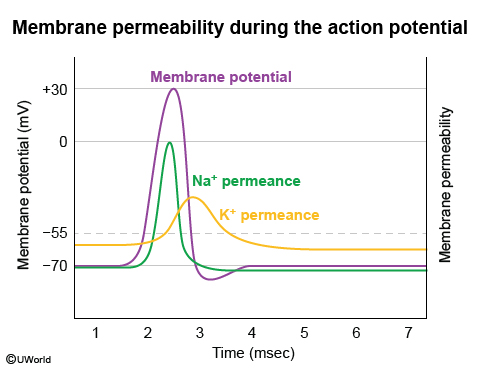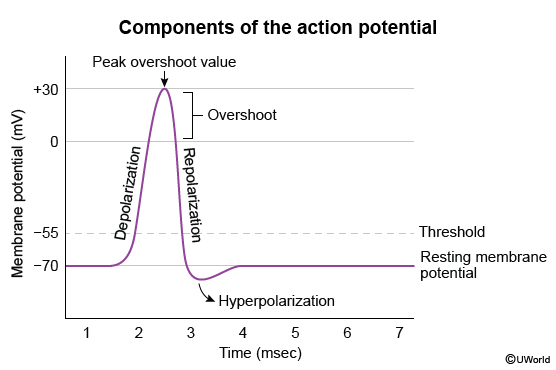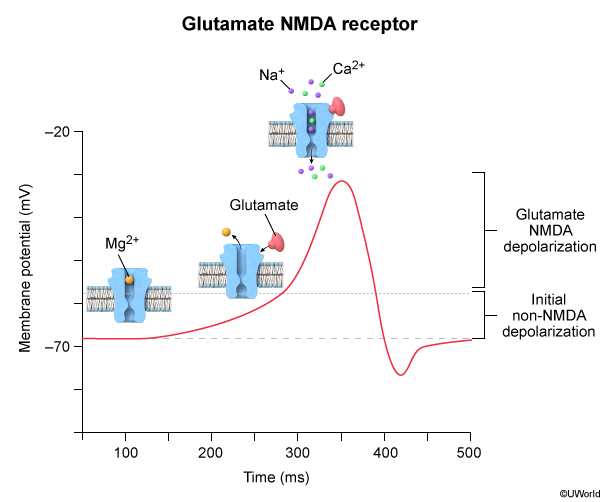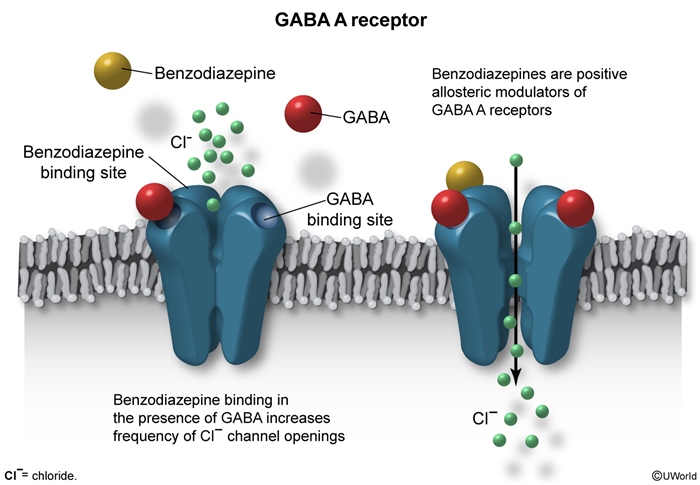Nerve Physiology
Article Sections
Introduction
Nerve physiology describes the mechanisms by which neurons generate, transmit, and modulate electrical signals to facilitate communication within the nervous system. Neurons rely on electrochemical gradients, ion channels, and neurotransmitter release to propagate signals and coordinate physiologic functions. The fundamental processes underlying nerve physiology include action potential generation, synaptic transmission, and signal integration.
Resting membrane potential
The resting membrane potential, typically around −70 mV, is determined by the combined equilibrium potentials of the ions that can move across the neuronal membrane. Each ion has its own equilibrium potential, which is the electrical potential at which the concentration gradient is balanced by the opposing electrical gradient. Under normal physiologic conditions, 3 key ions are balanced as follows (Table 1):
- Potassium (K⁺): High intracellular concentration and low extracellular concentration. The equilibrium potential for K⁺ is around
Continue Learning with UWorld
Get the full Nerve Physiology article plus rich visuals, real-world cases, and in-depth insights from medical experts, all available through the UWorld Medical Library.
Figures



